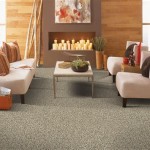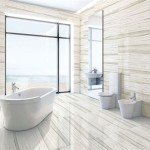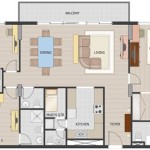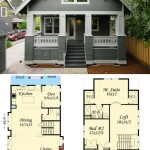Matching Bathroom Floor and Wall Tiles
Creating a cohesive and aesthetically pleasing bathroom design often involves careful consideration of tile choices. Matching bathroom floor and wall tiles presents a unique opportunity to achieve a seamless and visually striking space. This article explores the benefits, considerations, and design options associated with using matching tiles for bathroom floors and walls.
Benefits of Matching Bathroom Floor and Wall Tiles
Using the same tile for both floor and wall surfaces offers several advantages:
- Creates a sense of spaciousness: A continuous tile surface can visually expand the perceived size of the bathroom, particularly beneficial in smaller spaces.
- Streamlined aesthetic: Matching tiles contribute to a clean, uncluttered, and modern look. The uniformity creates a sense of calm and order.
- Simplifies design decisions: Selecting one tile for both surfaces simplifies the design process, eliminating the need to coordinate different colors, patterns, and textures.
- Easier installation: Using the same tile can potentially simplify the installation process, as there's no need to transition between different materials.
Factors to Consider When Matching Tiles
While matching tiles presents numerous advantages, certain factors warrant careful consideration:
- Tile Size and Shape: Large format tiles can further enhance the sense of spaciousness, while smaller tiles create more visual texture. Consider the overall bathroom dimensions when selecting tile size.
- Slip Resistance: Flooring requires slip-resistant tiles to ensure safety. Verify the tile's slip resistance rating (Coefficient of Friction) before using it on both floor and wall surfaces.
- Grout Lines: While matching tiles minimizes visual breaks, grout lines can still impact the overall aesthetic. Consider grout color and spacing to complement the tile choice.
- Maintenance and Cleaning: Certain tile materials are more prone to staining or showing water spots. Evaluate the maintenance requirements of the chosen tile before applying it to large surface areas.
Design Options with Matching Tiles
Matching floor and wall tiles doesn't necessarily mean creating a completely uniform look. Several design options allow for variation and visual interest:
- Accent Walls: Create a focal point by using a contrasting tile design or color on a single wall, while maintaining the matching tile on the remaining surfaces.
- Tile Laying Patterns: Different tile laying patterns, such as herringbone, chevron, or basketweave, on the floor or walls can add visual interest without disrupting the cohesive feel.
- Textured Tiles: Opt for textured tiles to add depth and dimension to the bathroom. This can break up the monotony of a completely smooth surface.
- Decorative Borders and Inserts: Incorporating decorative borders or mosaic inserts can add a touch of personality and elegance while still maintaining the overall matching tile scheme.
Tile Material Selection
Various tile materials are suitable for both floor and wall applications:
- Porcelain: A durable and versatile option with excellent water resistance, making it suitable for wet areas.
- Ceramic: Another popular choice, offering a wide range of colors, patterns, and finishes at a more budget-friendly price point than porcelain.
- Natural Stone: Materials like marble, granite, and slate provide a luxurious and timeless aesthetic but require more maintenance and sealing.
- Glass: Glass tiles can create a stunning and reflective surface, especially suitable for shower walls or backsplashes. Ensure they are slip-resistant if used on the floor.
Color Considerations
Color plays a critical role in the overall bathroom ambiance:
- Light Colors: Light-colored tiles create a sense of spaciousness and airiness, ideal for smaller bathrooms.
- Dark Colors: Darker tiles can offer a dramatic and sophisticated look, but they may make a small bathroom feel more enclosed.
- Neutral Colors: Neutral tones like beige, gray, or white provide a timeless and versatile backdrop, easily adaptable to different décor styles.
- Bold Colors: Vibrant colors can add personality and energy, creating a focal point within the space.
Lighting and Matching Tiles
Lighting significantly influences how tile colors and textures appear:
- Natural Light: Bathrooms with ample natural light will showcase tile colors and patterns more accurately.
- Artificial Light: Carefully consider the color temperature and placement of artificial lighting to complement the chosen tile and create the desired ambiance.
- Combination Lighting: Layering different types of lighting, such as ambient, task, and accent lighting, can enhance the visual appeal of the tiled surfaces.
Budgeting for Matching Tiles
Matching tiles can impact the overall bathroom renovation budget:
- Tile Cost: Tile prices vary significantly depending on the material, size, and finish. Factor in the total square footage when budgeting for tiles.
- Installation Costs: Labor costs for tile installation will depend on the complexity of the project and the chosen tile material.
- Additional Materials: Account for the cost of grout, sealant, adhesives, and other necessary materials.

Tiles Talk Mix And Match 6 Ways To Achieve Bathroom Bliss Perini

Matching Tiles Tips And Suggestions For Pairing Porcelanosa

Design Tips For Matching Ceramic And Vinyl Floor Wall Tiles Builddirect Blog

Beautiful Bathroom Floor Wall Tile Design Combos

141 Mix And Match Tile Ideas In Bathrooms Digsdigs

Tiles Talk Mix And Match 6 Ways To Achieve Bathroom Bliss Perini

Matching Wall And Floor Tiles

Affordable Bathroom Wall Tiles Ceramic Tile Ideas

70 Gorgeous Bathroom Tile Ideas For 2025

Bathroom Floor And Wall Tiles Design Collection With Anti Skid








